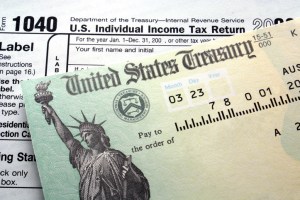Long Island Businesses Prepare for Tax Season
Since the pandemic began, there have been many tax programs to help struggling businesses. But will they continue to benefit businesses this tax season?
We don’t know if the pandemic is truly over, but we do know that many tax programs put in place amid its peak are history. The Paycheck Protection Program and others are in the books, but at least one major Covid-19 era tax credit is turning up on some businesses’ 2022 tax returns.
The Employee Retention Tax Credit, for 2020 and the first three quarters of 2021, was in place. When and whether to tap this credit for 2022 can be a key question for companies.
“It’s a huge support for businesses that qualify,” said Michael Katz, managing partner at Woodbury-based KVLSM, an accounting firm serving businesses and individuals.
Eligible businesses can get refunds up to $5,000 per employee for 2020 and $7,000 per employee per quarter for the first three quarters of 2021, totaling up to $26,000 per employee kept on the payroll.
“It goes back to 2020 or 2021, whatever you can qualify for,” said Randall Rogg, managing partner at Rogg & Kejriwal, based in Carle Place. “It’s still a godsend to a lot of our clients.”
He noted that companies showing they were adversely impacted, including supply chains, might qualify even if revenue didn’t drop by prescribed amounts of 50 percent in 2020 or 20 percent in 2021 both compared to 2019.
“We keep on reviewing clients, to see if they qualify, even though when the original specifications came out, they didn’t qualify,” Rogg said.
Katz said restaurants often qualified due to partial shutdowns, while doctors sometimes were allowed to do only emergency procedures. Staffing agencies saw revenues drop as hiring declined.
“They had a significant decrease in revenue as a result of the pandemic,” Katz said. “People were cutting back on the workforce and not hiring.”
Others said it’s important that companies that do not qualify accept that reality rather than trying to appear to be eligible.
“There’s a lot of advertising for it. Most people do not qualify,” said Michael Berger, managing member of Ronkonkoma-based Michael J. Berger & Co. “If they apply for it and get it, they may have to give it all back in two years.”
Companies helping businesses apply with fees based on contingency remove upfront costs, but can be pricey (one quarter of the refund) and tie compensation to obtaining the credit.
“They can use overly broad interpretations of what qualifies employers for credits,” Katz added.
While many people saw their PPP loan converted into a grant, some have had to repay loans. “One business never reopened, so they didn’t meet the spending requirements for payroll to get the PPP forgiveness,” Katz said. “Someone else sold their business, so they didn’t have enough to spend on payroll.”
The Research and Development Tax Credit, modified in recent years, covers activities beyond what one might traditionally consider R&D. “It’s a wonderful credit, but it requires a lot of documentation and notation on the process you’re using,” Rogg said. “It can be prohibitive for a small business to document the costs of a small project, whereas a larger company can take advantage of it.”
For tax years beginning on or after Jan. 1, 2023, the Internal Revenue Service increased the annual payroll offset for the R&D tax credit from $250,000 to $500,000.
As the economy reopened, many industries bounced back, such as contractors, landscapers and others, turning 2022 into a potentially rebound year.
“The retail industry — restaurants, bakeries, stores — is still down,” Katz continued. “There are still people who don’t go out the way they did prepandemic.”
He mentioned a large restaurant that hosted a tremendous amount of parties, although these events have not resumed on a prepandemic scale.
“They’re hurting tremendously,” Katz said. “That aspect of the business has just not returned.”
Inflation impacted tax brackets, but Katz said these were simply indexed for inflation to maintain the status quo in real dollars.
“It’s certainly hurting businesses. Costs have gone up,” Katz said. “They’re reluctant to raise prices to correspond with it.”
Hiring in a tight labor market has been a huge factor for businesses, holding down revenues despite rising demand.
“The labor market has been extremely difficult for most clients I’ve talked to, regardless of what they do,” Katz said. “I know a lot of businesses are struggling with staffing. I think the workforce may have changed. The workforce shrank.”
The IRS increased the required minimum distribution (RMD) age from retirement plans from 72 to 73 starting in 2023; in 2020 it increased from 70 1/2 to 72.
“Individuals who don’t need the money are allowed to leave it there longer to grow tax deferred,” Katz said.
There is a 50 percent penalty if you don’t withdraw money from your RMD during the required year, which could be bad news for people unaware of the rules. “They wanted to make it easier for people,” Berger said. “Not everybody wants to take the money out. They’d rather postpone.”




























